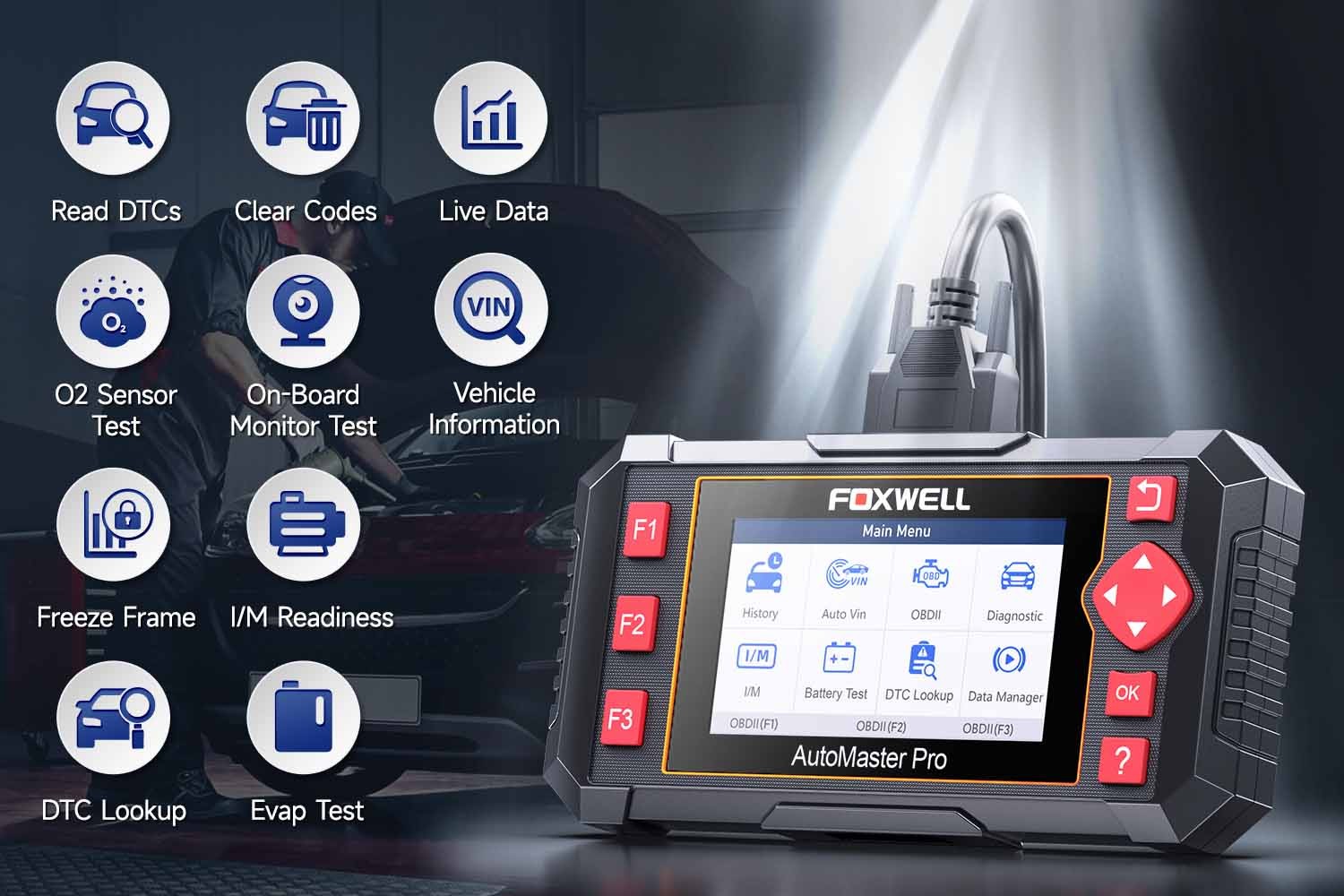Have you ever faced the unsettling glow of the check engine light on your dashboard? Perhaps you used an OBD2 scanner to clear the code, hoping it was a minor glitch that would vanish for good. It’s a common scenario, and while clearing the code might temporarily turn off the light, it doesn’t always mean the problem is truly resolved. This raises a crucial question for car owners and enthusiasts alike: Will An Obd2 Scanner Read Cleared Codes?
Many drivers believe that clearing a diagnostic trouble code (DTC) erases all traces of the issue from their car’s computer. However, the reality is more nuanced. Clearing a code is akin to silencing an alarm – it stops the immediate warning, but it doesn’t necessarily fix the underlying problem, and importantly, it doesn’t completely wipe the slate clean in your vehicle’s memory. Let’s delve into what happens after you clear a code, whether scanners can still detect these cleared codes, and why understanding this is vital for maintaining your car’s health and performance.
The Lingering Memory: Why Your Car Remembers Cleared Codes
When you clear a diagnostic code, you’re essentially telling your car’s Engine Control Module (ECM) to turn off the check engine light and remove the active fault code from its immediate display. However, modern vehicles are designed to retain a history of detected issues. Think of it like deleting a file on your computer; it might disappear from your desktop, but it often resides in the recycle bin or can be recovered with specialized software. Similarly, your car’s system often keeps a record of past faults, even after the codes have been cleared from the dashboard display.
This data retention serves a valuable purpose. It allows technicians to diagnose intermittent problems or recurring issues more effectively. By accessing this historical data, mechanics can gain a more complete picture of your car’s health and identify patterns that might be missed if only active codes were considered. So, while your basic OBD2 scanner might not immediately show a cleared code as an active fault, the information isn’t necessarily gone forever.
Decoding Scanner Capabilities: Accessing Cleared Code History
You might be wondering if all scanners are created equal when it comes to accessing this historical data. The answer is a resounding no. The type of OBD2 scanner you use plays a significant role in whether you can delve into the history of cleared codes.
Basic OBD-II Scanners: Focus on Active Codes
The most common and affordable OBD-II scanners, often used by DIY car owners, are primarily designed to read active codes – those that are currently triggering the check engine light or other warning indicators. Once a code is cleared using these basic scanners, it will typically no longer appear as an active fault. These scanners are excellent for quick diagnostics and resetting the check engine light for minor, resolved issues. However, their capabilities are limited when it comes to digging deeper into past problems.
Professional Diagnostic Tools: Unlocking Historical Data
For a more comprehensive look at your vehicle’s diagnostic history, professional-grade diagnostic tools are necessary. Scanners like the Foxwell NT909, and similar professional models, are engineered to access a broader range of data stored within your car’s computer systems. These advanced tools can often retrieve historical data, including information about previously cleared codes. This can include details like how often a code occurred, under what conditions it was triggered, and even freeze-frame data captured at the time of the fault. This level of detail is invaluable for mechanics when troubleshooting complex or recurring issues.
Manufacturer-Specific Scanners: Deep Dive Diagnostics
Taking diagnostic capabilities a step further are manufacturer-specific scanners. These tools are designed to communicate with the computer systems of a particular car brand (e.g., Ford, BMW, Toyota) at a deeper level. They often provide the most comprehensive access to diagnostic data, including detailed histories of cleared codes and brand-specific fault information that might not be accessible with generic OBD-II scanners. Dealerships and specialized repair shops often utilize these scanners for in-depth diagnostics and repairs.
If you suspect an ongoing issue, even after clearing a code, or if you want a complete picture of your vehicle’s diagnostic history, seeking a professional diagnosis with advanced or manufacturer-specific tools is highly recommended.
How Fault Codes Are Stored and Erased: A Technical Overview
To understand whether an OBD2 scanner will read cleared codes, it’s helpful to know how fault codes are stored and managed within your car’s computer system. When a sensor detects a problem – for example, a misfire in the engine or a faulty oxygen sensor – the ECM generates a Diagnostic Trouble Code (DTC). This DTC is stored in the ECM’s memory, and in many cases, triggers the check engine light on your dashboard.
When you use a scanner to “clear codes,” you are essentially sending a command to the ECM to erase the active DTCs and turn off the check engine light. However, the way this data is stored varies between vehicles and systems. Some vehicles use volatile memory for active codes, which means the data is lost when power is removed or when a clear command is sent. However, many modern vehicles also utilize non-volatile memory to store historical fault data.
Non-volatile memory retains information even when the power is off. This is where cleared codes and related historical data are often stored. This memory can contain details beyond just the code itself, such as:
- Frequency of Occurrence: How many times the fault code has been triggered.
- Driving Conditions: Freeze-frame data capturing engine parameters (like RPM, temperature, load) at the moment the fault occurred.
- Time Stamps: When the fault codes were triggered and cleared.
Even after you clear codes, this historical data in non-volatile memory can often be accessed by advanced scanners, providing valuable insights for diagnosis.
The Implications of Clearing Codes: Beyond Turning Off the Light
Clearing diagnostic codes can sometimes seem like a quick fix, but it’s essential to understand the potential consequences and limitations.
Masking Underlying Issues: The most significant risk of simply clearing codes without addressing the root cause is that you might be masking a more serious problem. For example, if your check engine light came on due to a genuine engine misfire, clearing the code will turn off the light, but the misfire will likely return if the underlying issue (like a faulty spark plug or fuel injector) isn’t fixed. Ignoring persistent or recurring codes can lead to more significant damage and costly repairs down the line.
Impact on Emission Readiness: Clearing codes can also affect your vehicle’s emission readiness monitors. These monitors are self-tests that your car’s computer runs to ensure all emission control systems are functioning correctly. After codes are cleared, these monitors reset and need to complete their tests again. This process can take time and require specific driving cycles. If you take your car for an emissions test too soon after clearing codes, the monitors might not be ready, leading to a failed emissions test – even if there’s no active problem.
Potential Red Flags for Vehicle Inspections and Sales: If you’re planning to sell your car or take it for a pre-purchase inspection, clearing codes right before can be counterproductive. Experienced mechanics and inspectors are often aware of this tactic and can detect if codes have been recently cleared. This can raise suspicion that you might be trying to hide underlying issues, potentially deterring buyers or leading to closer scrutiny.
Navigating the Legality and Ethics of Clearing Codes
While clearing codes for minor issues you’ve genuinely addressed (like tightening a loose gas cap) is generally acceptable, there are legal and ethical considerations to be aware of, particularly concerning emissions-related faults.
In many regions, it is illegal to tamper with or disable emissions control systems. Clearing emissions-related DTCs without fixing the underlying problem can be considered a violation of these regulations. Furthermore, knowingly selling a vehicle with unresolved issues or recently cleared codes that obscure significant faults can also have legal ramifications in some jurisdictions. Buyers have a right to accurate vehicle history and disclosure of known problems.
From an ethical standpoint, transparency is crucial. If you are selling a vehicle, it’s always best to be honest about any known issues and avoid using code clearing as a way to deceive potential buyers.
Conclusion: Clearing Codes – Use Wisely and Understand the Limitations
So, will an OBD2 scanner read cleared codes? The answer is yes, sometimes, depending on the scanner’s sophistication and what you mean by “read.” Basic scanners will typically not show cleared codes as active faults, but advanced scanners can often access historical data about past codes.
Clearing codes can be a useful tool for resetting your system after addressing a minor issue. However, it should never be used as a substitute for proper diagnosis and repair. Think of your check engine light and diagnostic codes as your car’s way of communicating. Ignoring these warnings or simply silencing them without investigation can lead to bigger problems and potentially compromise your safety and your vehicle’s longevity. When in doubt, or if the check engine light returns after clearing a code, it’s always best to seek professional help from a qualified mechanic.
FAQs
Can I use my phone as a car code reader?
Yes, absolutely! With a Bluetooth OBD2 adapter and a compatible smartphone app, you can effectively use your phone to read and clear basic diagnostic codes.
Can an OBD2 scanner detect misfires?
Yes, most standard OBD2 scanners are capable of detecting engine misfires. They do this by reading misfire-specific trouble codes, typically in the P0300-P0312 range.
How can I find the code to my car without a scanner?
Some older vehicles have methods for retrieving diagnostic codes without a scanner, often involving turning the ignition key in a specific sequence or using the dashboard display. Consult your vehicle’s owner’s manual for vehicle-specific procedures.

